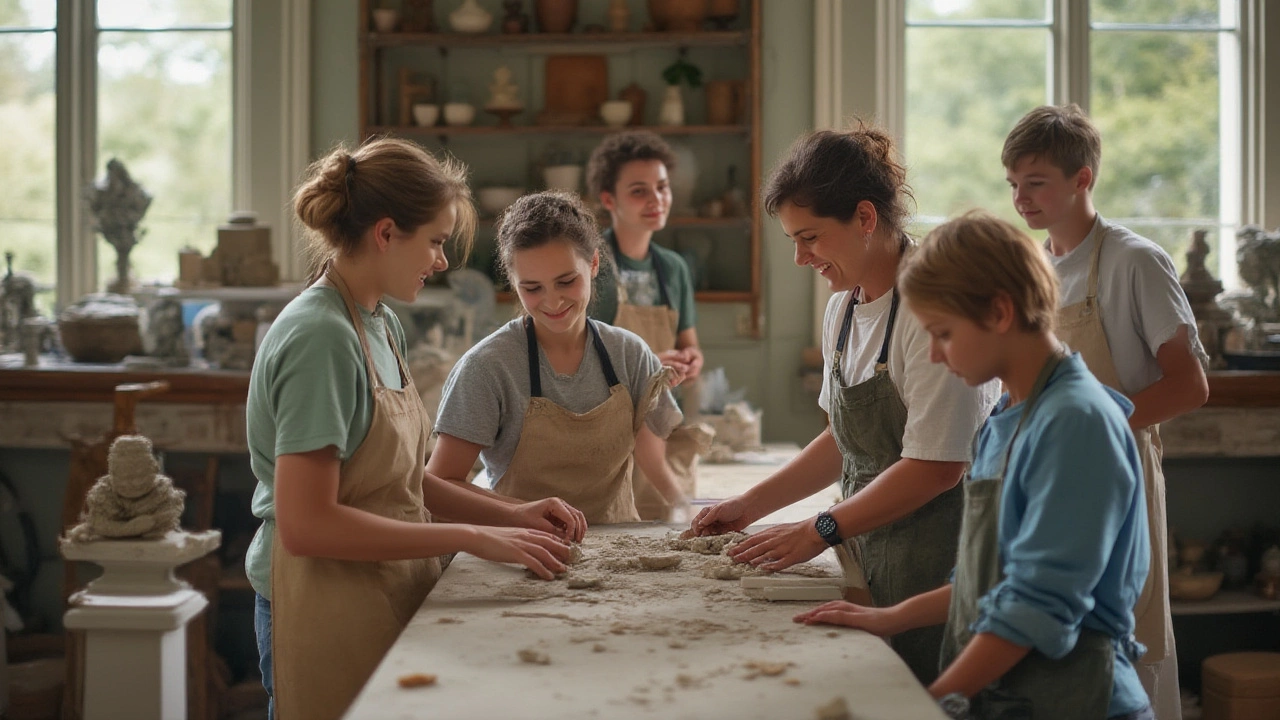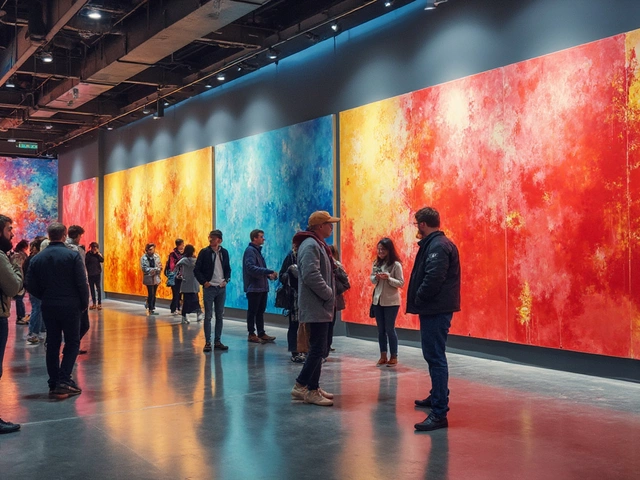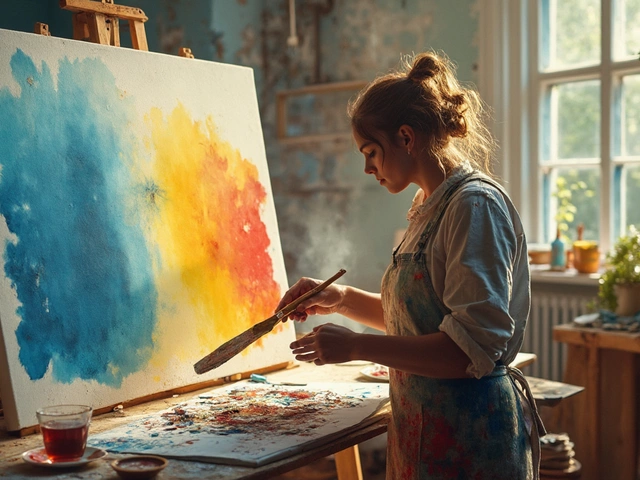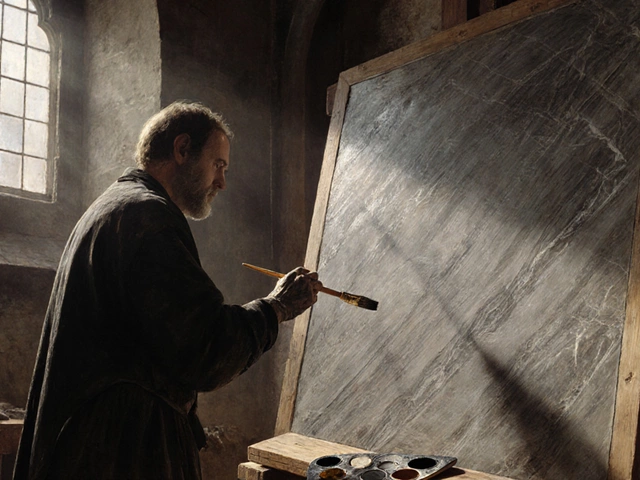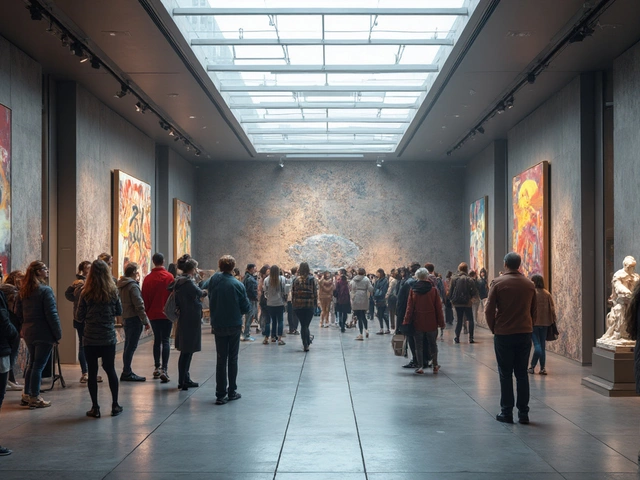Michelangelo once said he saw the angel in the marble and carved until he set him free. That's what gets people hooked on sculpture—the chance to make something solid from nothing but an idea and maybe a hunk of stone or a ball of clay. You don't need a grand workshop or years of fancy art school to start sculpting. What you really need is curiosity, patience, and the guts to mess up a few times. In this guide, you’ll find the ways in—the tools worth buying, common mistakes to dodge, and habits that’ll get your hands used to shaping the world around you. If you’re serious about learning sculpture art, read on for all the inside details nobody puts in their step-by-step kits.
Choosing Your First Medium
The real magic in sculpture starts with the material you pick. Clay is the usual entry point—it's cheap, forgiving, and you can get started without power tools or protective goggles. Air-dry clay is even easier for beginners than the stuff you fire in a kiln. Try pressing your thumb into it and you'll quickly see how each mark you make tells a story. Some folks start with soap carving because you can find soap in any grocery store and all you need is a butterknife and a little patience. Wood carving is another classic, but expect a steeper learning curve and lots of sawdust in your shoes. If you want to go bigger, try plaster or concrete for outdoor work, but keep in mind you’ll need a bit of space.
Don’t rush into marble—you’ll spend more time worrying about your bank account than making art. Later, maybe. For now, pick something you can mess up without feeling like the world will end. Here’s what makes each beginner option tick:
- Clay – Highly forgiving. You can add or remove material as you learn. Great for detail work and easy to reuse if you mess up.
- Soap – Super cheap, washes off your hands, excellent for practicing knife control.
- Wire – Best for practicing form; wire armatures are the backbone for building figures in clay.
- Paper Mâché – Messy but fantastic for larger shapes and murals.
- Wood – Good for relief sculptures and simple figurines, but best tackled once you have steady hands and patience.
In a 2023 survey from ArtNet, more than 70% of novice sculptors chose clay as their starting point. That’s not by accident. So grab a chunk, squeeze it, and see where your imagination goes.
The Basic Tools You Really Need
The tool aisle at an art store can feel overwhelming, stacked with shiny gadgets and brushes you can’t name. Relax. When you’re starting out, a handful of basics will carry you a long way. In fact, one of the top tips from veteran sculptor James H. Rossato (featured at the 2022 Sculpture Biennale) is to keep tools simple. For clay, you’ll want a loop tool, ribbon tool, a wooden modeling tool, and a plastic knife. That's it. For soap carving, a paring knife or small carving set straight from the kitchen drawer works fine. If you go the wire route, pliers and wire cutters are all you need.
An old tip: don’t be afraid to raid your kitchen. Toothpicks for details, spoons to smooth, and even skewers for poking. As you get fancier, you’ll want to expand with wire armature kits (for figure work) or rubber shapers for smoothing. But don’t feel pressured—the best sculpture artists often make their own tools out of what’s lying around.
If you’re serious about trying wood or stone, invest in protective gear—a dust mask, goggles, and sturdy gloves, especially if you’re shaping with chisels or mallets. Here’s a simple table of starter tools for popular beginner materials:
| Material | Essential Tools | Cost (Approx.) |
|---|---|---|
| Clay | Loop tool, Ribbon tool, Wooden tool, Knife | $15-30 |
| Soap | Small knife, Sandpaper | $5 |
| Wire | Pliers, Wire cutters | $15-25 |
| Wood | Carving knife, Gloves, Sandpaper | $20-40 |
| Paper Mâché | Bowl, Newspaper, Flour, Paintbrush | $10 |
Remember, the most important tool is your hands. Learning the pressure, angle, and movement takes time, but if you watch sculptors at work—even on YouTube—you’ll notice they rely on feel as much as the gadgets in their kit.
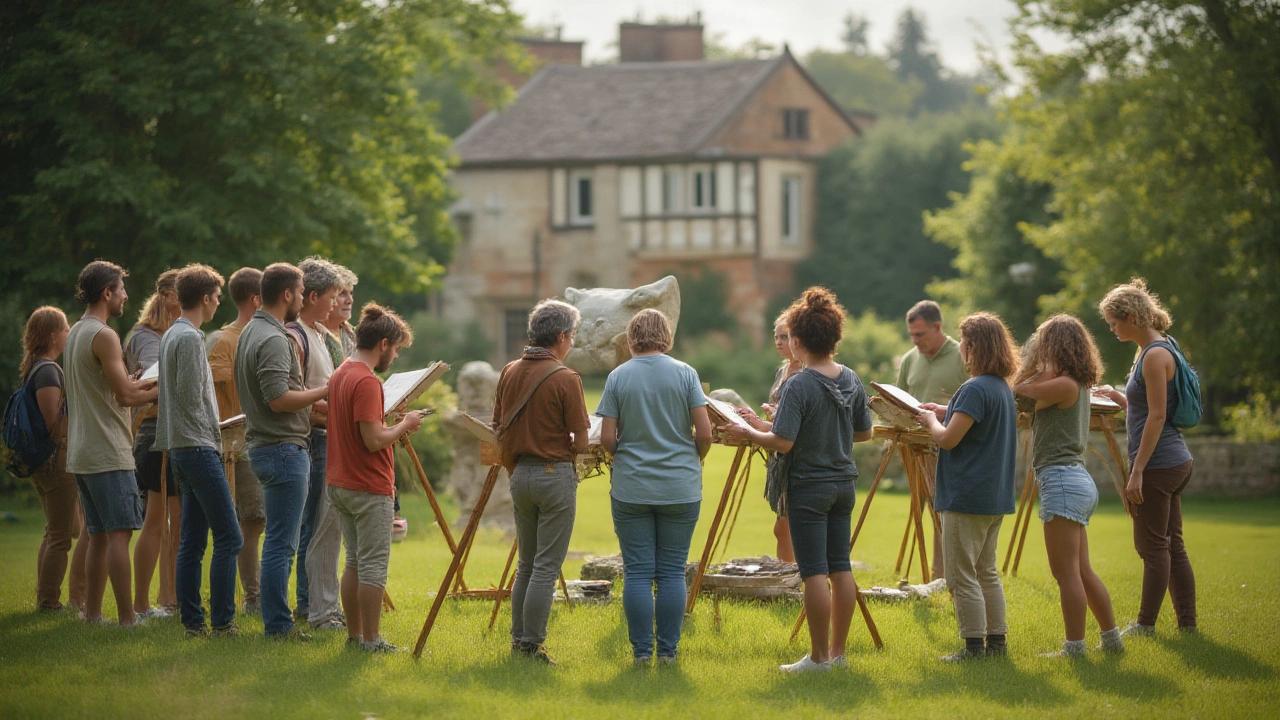
Learning Techniques Step-By-Step
There’s no shortcut here: you have to make a bunch of wonky, uneven shapes before anything starts to look good. The key is embracing that ugly stage. Let’s break down the practical way most artists (apart from those lucky prodigies) actually learn:
- Start With Simple Forms – Balls, cubes, cones. Every complex sculpture, from a bust to a dragon, starts with these basics. Practice rolling and pinching clay into each form until you can do it with your eyes closed.
- Copy the Masters – Don’t worry about originality yet. Find a famous sculpture—Michelangelo’s David, Rodin’s Thinker, or even a cartoon figure you love—and try to recreate it, even at a tiny scale. You learn more by copying than you do staring at a blank canvas.
- Practice Proportion – Use a ruler or calipers (or just your finger) to measure and keep things in balance. Most beginners make heads too big or arms too short. Training your eye for proportion is half the battle.
- Work From the Inside Out – Especially for figures, start with a wire ‘skeleton’ or armature. Build bulk around it; don’t jump to surface details too soon.
- Experiment With Texture – Find leaves, fabric, or even old toothbrushes, and use them to press patterns into clay or plaster.
- Set Small Challenges – Try sculpting a favorite fruit or your pet’s face. If it doesn’t look right, keep tweaking. Take photos as you go—Instagram has a thriving newbie sculptor community eager for swaps and feedback. In fact, the #sculptureart tag saw an 18% jump in posts since 2021.
Here’s the big lesson: avoid perfectionism early on. The sculptors whose work you see in galleries also made lopsided bowls and awkward faces. Muscle memory comes from making dozens of flops. And don’t be afraid to watch demos online—there are free workshops every month on creative platforms and even local library events.
Building Your Skills: Overcoming Challenges
The first thing that trips up beginners? Impatience. You want your project to look finished in an hour, but real change happens slowly. According to the National Sculpture Society’s 2024 learner survey, most new sculptors say their biggest problem was “getting stuck” or feeling their work didn’t measure up. Here’s how to sidestep that frustration:
- Use a Timer – Set short bursts, like 20 minutes. Focus on a single detail, then step away. This keeps the work fun and reduces burnout.
- Break Projects Into Layers – Don’t try to finish everything at once. Start with big shapes, refine them, then add detail. This works in every medium.
- Don’t Judge Too Soon – Many sculptures are ugly right up until the last hour. If it looks off, keep adding or removing bit by bit. Clay can always be reshaped before it dries.
- Join Peer Groups – Local classes or online forums can be a game-changer. Getting feedback speeds up the learning curve, and you’ll pick up tricks you can’t find in books.
- Photograph Your Progress – You’ll only notice improvement after a month or two. A quick phone pic before and after each session can be super motivating.
- Fix Common Mistakes – For example, dry clay cracks because it lost moisture too quickly—keep it wrapped in plastic. Wood getting splintery? Sharpen your tools. Gaps don’t match up with wire? Add more bulk with foil or add more wraps before applying clay.
Here’s a fun fact: a 2022 Royal Academy study showed hobbyists who shared their work online were 40% more likely to stick with sculpture after six months. Accountability and a little encouragement keep you going. So don’t hide your moldy attempts—share them, laugh at them, and watch how fast things start clicking.
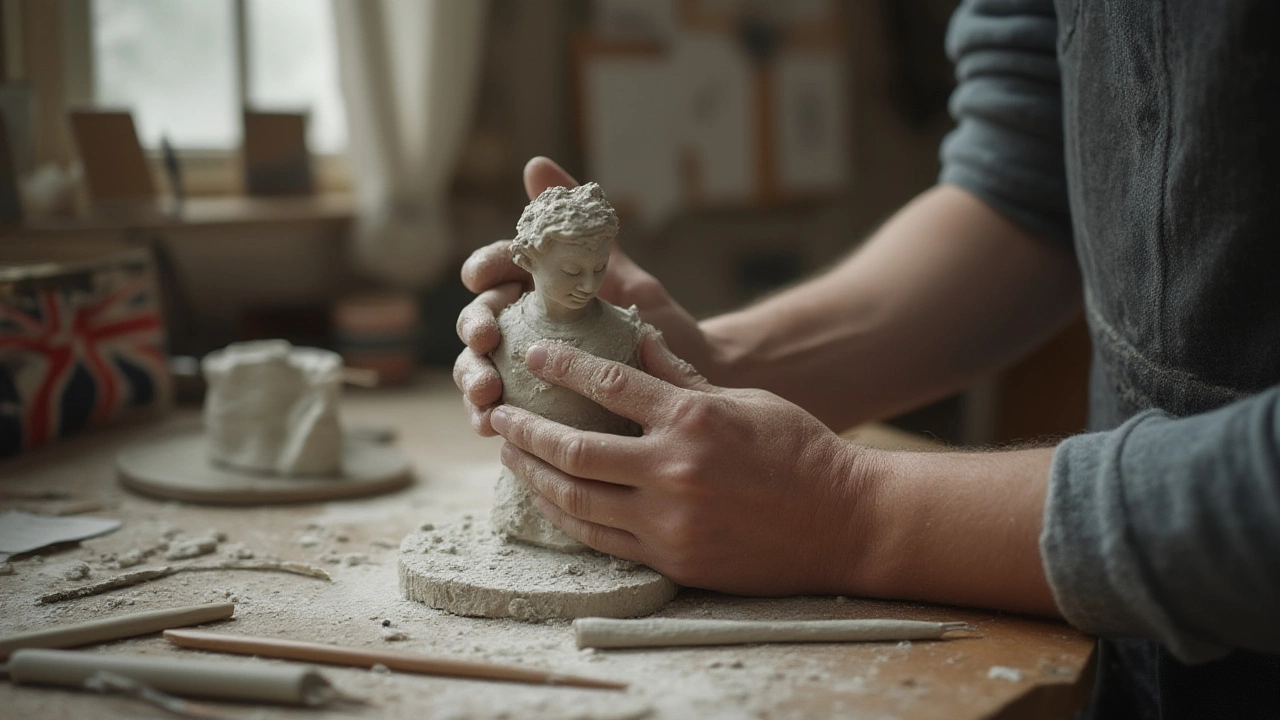
Taking Sculpture to the Next Level
Once your basic forms don’t scare you off, it’s time to level up. Look for local workshops or community college classes. Many cities have “open studio” days where you can try out advanced materials like bronze or work under the supervision of an expert. Don’t overlook online courses—Skillshare, Coursera, and YouTube channels like Proko offer a treasure trove of free and paid content. Some universities release full-length lectures and demo videos you can pause and replay until the motion makes sense.
If you want to make a mark beyond your own living room, consider submitting to amateur sculpture competitions. Even small events push your skills, give you a deadline, and teach you what judges look for. In 2024, over 5,000 entries poured into the International Sculpture Center's student show—many from folks who started out just a year earlier. Not a bad motivator to keep those hands moving.
Also, keep an eye out for sculpture parks and public art walks in your area. Seeing large-scale work up close gives you a sense of what’s possible outside the studio. A little secret—most contemporary artists say they borrowed ideas from these kinds of installations, and you might stumble across a mentor just by striking up a conversation.
If you’re worried about cost, try recycled or scavenged materials. Cardboard, scrap wire, and even leftover construction insulation make great practice pieces before you tackle expensive clay, wood, or stone. Famous artists like Niki de Saint Phalle started with mosaic scraps and junkyard finds. The only thing stopping you from bringing your ideas to life is taking the first step and giving yourself permission to fail, laugh, and try again.
So get your hands dirty, keep an open mind, and see what your imagination can shake loose from a plain block or lump. The world of sculpture art is waiting on your twist. Who knows—you might chip away and find your own angel in the marble.
